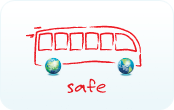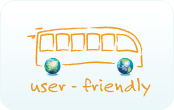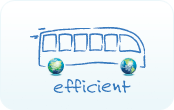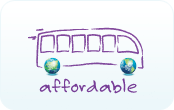|
Goldman Sachs is a prior investor in Uber — in fact the same group at the investment banking firm led the investment in Uber and GoEuro, according to the latter’s co-founder, Naren Shaam — so the firm is evidently viewing the two transportation businesses as non-competitive. Which, at least at present, they are. Uber is generally focused on shorter, single leg trips in urban locations, while GoEuro aims to simplify longer distance trips which might span multiple countries.
It’s more fitting to think of GoEuro as a long distance version of another European transportation startup, Balderton-backed Citymapper — the latter being focused on simplifying urban public transport trips within cities like London. GoEuro is routing similarly complex/multi-modal journeys but ones that can span borders, not just boroughs.
GoEuro also supports some ticket booking directly on its platform at this point (in six markets: Spain, France, Benelux and Italy).
“We are hoping to see more and more… people realising that public transportation in Europe is exceptionally good, and a serious alternative to driving a car, if only you have a chance to find the right rail, bus or air connection every time and with a simple transaction experience — which is exactly what GoEuro is about,” he says.
While maintaining its pan-European travel focus, GoEuro does also support worldwide air travel routes, since its users are not just Europeans but anyone travelling to the region. It has users from some 120 countries at this point.
“We see everything from short domestic one-way trips to multi-person, long-distance return journeys. Oxford to Reading, Cologne to Paris, Madrid to Malaga, Berlin to Prague, literally everything and across travel modes rail, air and bus,” says Shaam, discussing the types of trips GoEuro users are searching for.
“Our multi-mode travel definitely happens for the more touristy destinations like Heidelberg, but also across tons of smaller non airport locations throughout our core markets based on consumer needs. Given that Europe has about 200 to 300 relevant airports, but more than 40,000 railway and bus terminals the ability to get from point A to B is our focus.”
A large proportion (30 to 40 per cent) of GoEuro users who start off searching for a particular mode of transport (such as a train), end up switching to an alternative (such as a bus/coach), but, as you’d expect, Shaam says there’s no single mode of transport winner emerging on the platform, with choices entirely dependent on the route, specific offerings and user preferences. Travel, as a category, contains multitudes of needs.
“We sell good volume of tickets across the board for all modes of travel,” he adds.
Shaam says the new Series B funding will be used for investing in the product, team and user base, as with prior rounds. GoEuro closed a $27 million Series A back in August 2014. Its seed round was $4 million in March 2013, but was subsequently further topped up in January 2014.
Shaam talks up the complexity of acting as the technological connective tissue linking so many different forms of transport and regional transportation providers, noting that GoEuro covers more than 30,000 stations (rail, bus/coach) across the 11 countries it operates in at this point.
That said, it’s not the only startup playing here by any means. The challenges of organizing transport chaos are myriad, but the massive size of the market — more than $160 billion is spent annually on travel across Europe, according to GoEuro — is enough of an incentive to drive plenty of interest here. Competitors in the multi-modal European travel planning space include the likes of fromAtoB, Waymate and Wanderio. There’s also Loco2, which focuses specifically on pan-European rail travel.
“It’s easy to underestimate the task of building a simple, unified search and booking tool for all rail, bus and air travel in Europe,” adds Shaam. “Unlike the airline industry, there is no common platform or even agreed data standards for rail and bus operators. And the number of destinations and routes is several orders of magnitude larger than for air travel. So while we’re very happy to see how far we’ve got in our first two years and a bit, there’s still a lot left to do to make European travel booking become as easy as a click of a button.”
Discover more
Source
|














